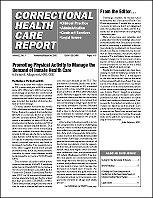For Opioid Addiction, Treatment Under-dosing Can Lead to Fentanyl Overdosing—A Physician Explains
Author: Lucinda Grande.
Source: Volume 26, Number 04, Fall 2025 , pp.75-77(3)

< previous article |next article > |return to table of contents
Abstract:
Family physician and addiction specialist Lucinda Grande explains that federal buprenorphine dosing guidelines—largely unchanged since 2002—have not kept pace with the potency of today’s fentanyl-dominated opioid supply. Many patients continue to experience withdrawal and craving at the FDA’s long-standing “target” dose of 16–24 mg, increasing their risk of relapse and fatal overdose. Evidence now shows benefits up to 32 mg, including better treatment retention, lower illicit opioid use, and improved health outcomes. Grande argues that underdosing—reinforced by outdated policies, insurer caps, and stigma—can be deadly. She calls for patient-centered, flexible dosing, insurer and state policy reform, and protection of Medicaid coverage to ensure that effective, individualized treatment remains available and continues to drive down opioid deaths.Keywords: Buprenorphine; Opioid Use Disorder; Fentanyl; Treatment Dosing; Addiction Medicine
Affiliations:
1: University of Washington.